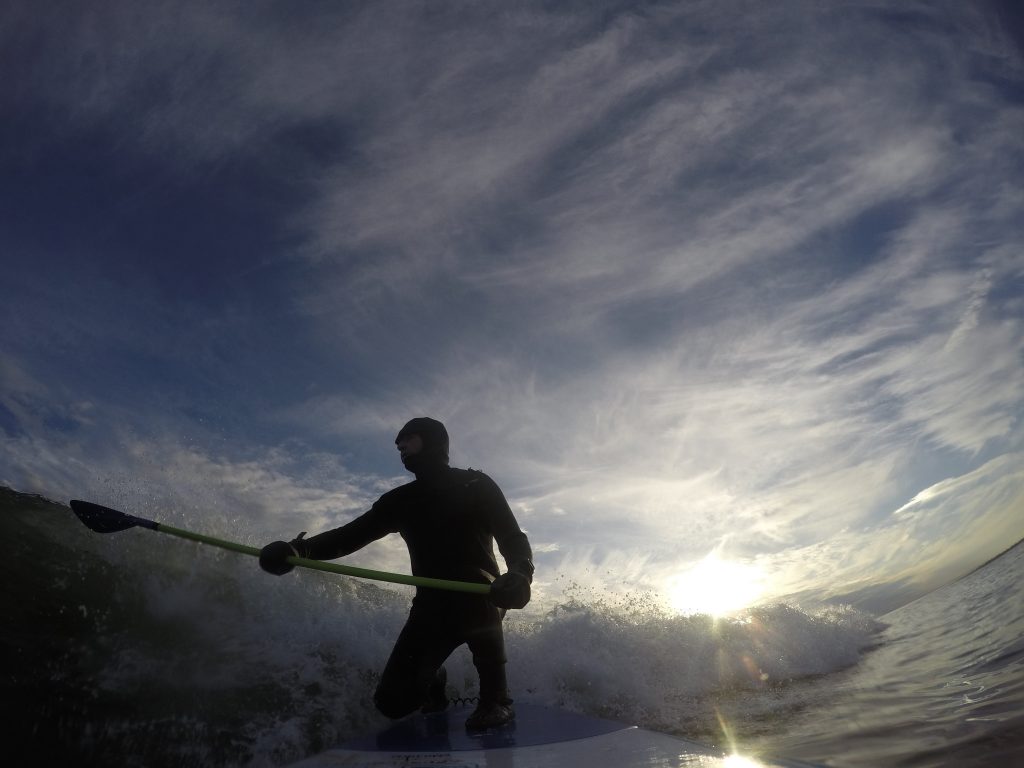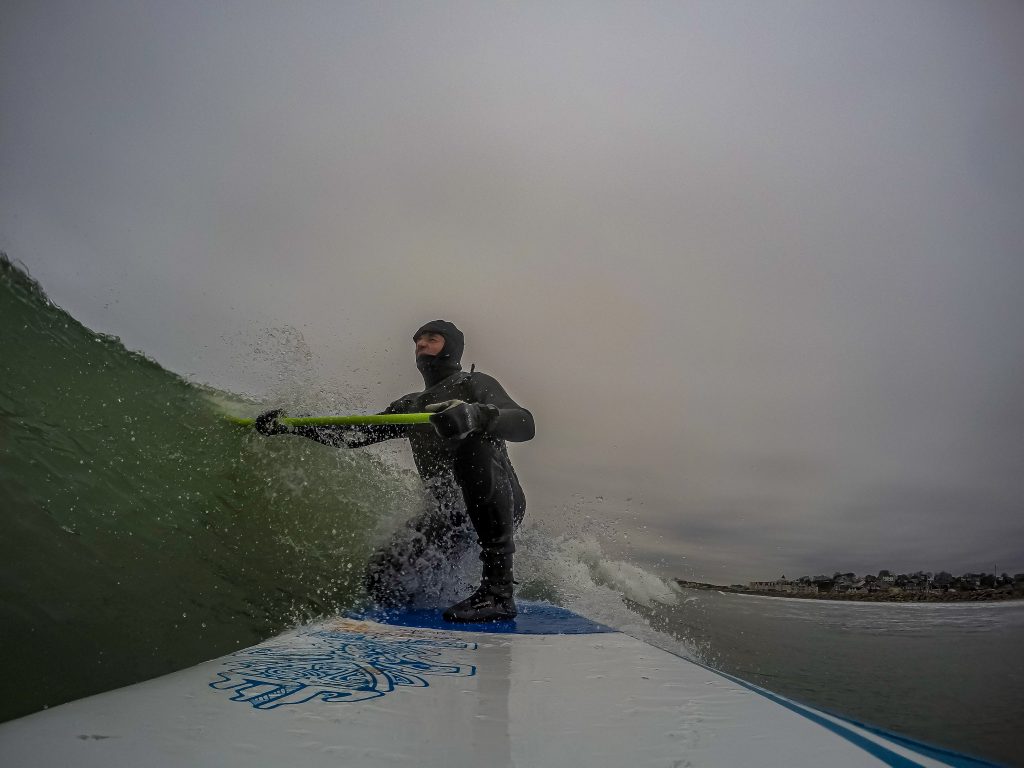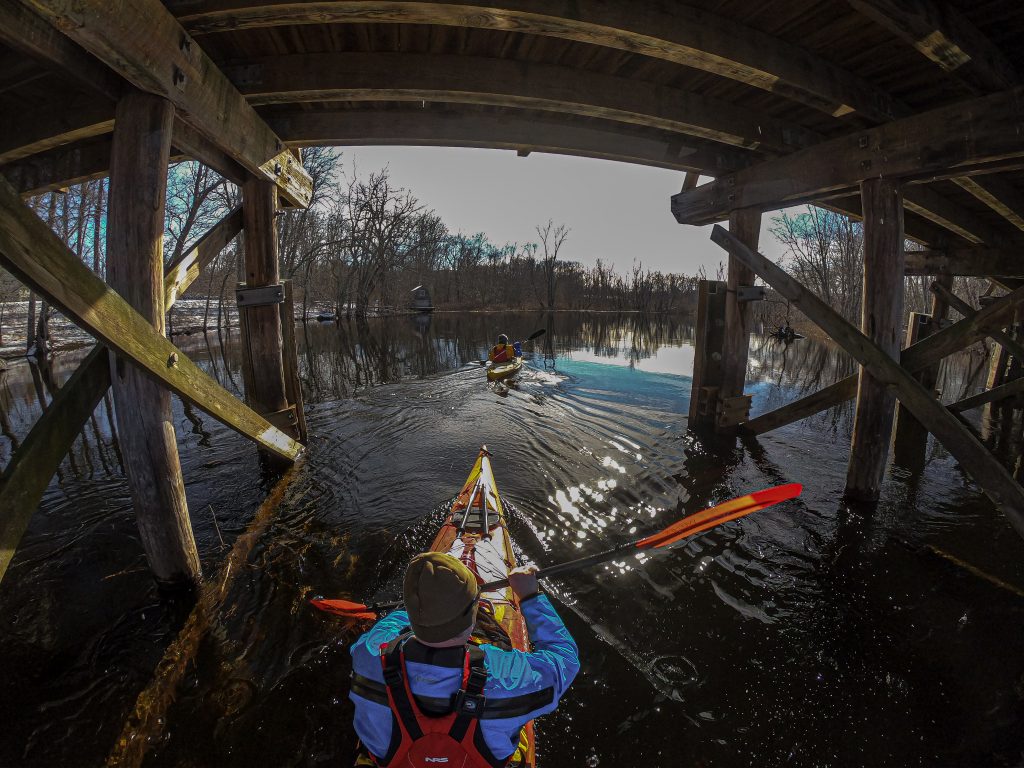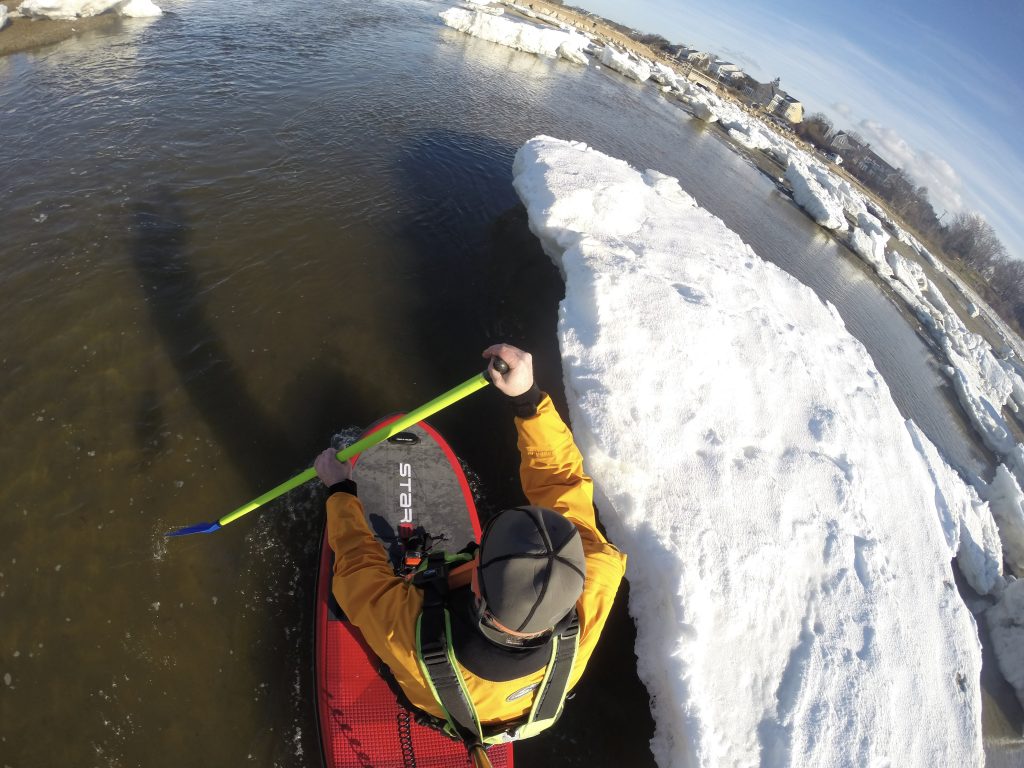Fall paddling season in the Northeast means fewer crowds, stunning scenery, and cooler water. The advent of autumn also necessitates that paddlers evaluate their insulation systems before hitting the water—the two most common of which are wetsuits and drysuits. While both types of insulation will keep you warm in cold water, there are a number of differences between wetsuits and drysuits.
Wetsuits vs. Drysuits
As their names imply, wetsuits keep you warm when wet and drysuits keep you dry (they’re waterproof). That said, there’s more than one difference between these two key pieces of fall paddling gear.

What to Know About Wetsuits
Wetsuits are made from a closed-cell foam material, typically neoprene. The material traps a thin layer of water between your body and the wetsuit. The heat from your body warms the thin layer of water, creating a thermal barrier and allowing you to stay warm in cold water. It also means you get the rush of cold water before a wetsuit warms up.
Because wetsuits work by trapping a thin layer of water between them and your body, they’re designed to fit snugly. A wetsuit that is too loose will allow cold water to fill in the gaps between your body, the wetsuit, and the protective warm layer of water—ultimately making you feel cold.
Wetsuits come in a variety of thicknesses and the thicker the wetsuit, the warmer it is. They’re also available in a variety of styles. An all-weather paddler might have everything from a 1-millimeter short-sleeved top for cool summer-morning paddles to a 6-millimeter hooded suit for mid-winter surfing.

What to Know About Drysuits
Drysuits are made from a waterproof (generally breathable) material and feature gaskets that seal out water. Drysuits aren’t designed to keep you warm, per se—they’re intended to keep you dry—however, you can add layers underneath them for insulation. Wicking layers like wool, fleece, and polyester work better than moisture-absorbent materials like cotton. For instance, a paddler might wear lightweight long underwear underneath their drysuit on a crisp fall day while heavier fleece (or even a lightweight puffy) is ideal for more frigid fall paddles.
Because drysuits keep paddlers dry and are easily layered underneath, they fit looser and there is less variety in drysuits compared to wetsuits. Drysuits also require more maintenance than wetsuits—you need to regularly wax their zippers and seals to keep them from drying out.
The waterproof/breathable material most drysuits are constructed with is expensive. Drysuits are thus normally pricier than wetsuits. But they’re typically longer lasting than wetsuits, which can lessen the price disparity over time.
Do I Need a Wetsuit or Drysuit?
Wetsuits and drysuits are better suited to some activities and paddlers than others.

When to Choose a Wetsuit
Wetsuits and neoprene tops are great for keeping the chill out during fall paddles and ideal for activities where you’ll be submerged in water for an extended period of time, such as surfing or practicing your Eskimo rolls in chilly water. Wetsuits fit snugly, aren’t breathable, and can get hot when working hard—something to remember if you’re heading out for an energetic paddle.

When to Choose a Drysuit
Drysuits are very versatile and altering the layers worn underneath them can cover a wide range of conditions and are great for extremely cold conditions—they provide the best of both worlds, warmth and dryness. They’re particularly nice for keeping splashing waves and dripping paddles from subtly soaking you on cold-weather/cold-water paddles.
Because you can layer underneath a drysuit, you can make one work in a variety of conditions. Comparatively, you might need three or four wetsuits to make it through a full Northeast paddling season. For example, a spring suit that covers the thighs and torso for early season days when the air is warm and the water is cold; a thin, long-sleeve top for warm conditions; a farmer John that covers the legs and torso for in-between days; and a thick, hooded suit for winter conditions.

My Thoughts on Wetsuits vs. Drysuits
Personal preference plays a big role in whether a wetsuit or drysuit is right for you. Personally, I mix and match depending on conditions. I opt for a drysuit when I want to stay warm and will have limited exposure to the water (i.e., flat and white water paddling in the winter, early spring, and late fall). When I know I’m going to get wet (like surfing) or to keep the cold at bay in cool conditions like during the spring and fall, I wear a wetsuit.
Luke Foley
Luke Foley is passionate about discovering and sharing hidden local treasures and has long been a New England adventure enthusiast. After all, there are only a few places where you can skin for fresh tracks in the morning and have a sunset surf session on the same day.




